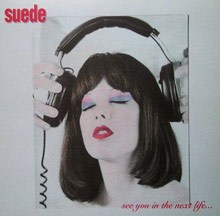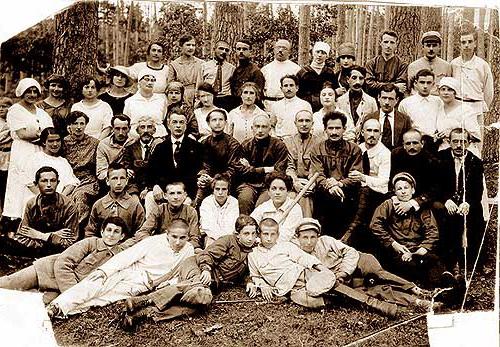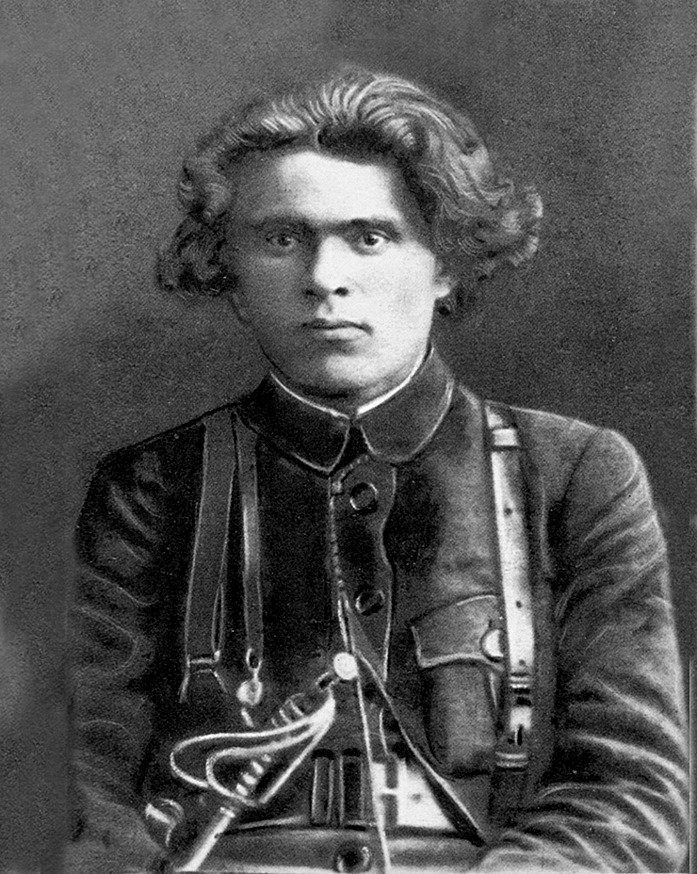What to do with muscles after training. Causes of muscle pain after exercise. Mild pain a day after training
Intensive training, especially after a long break, can lead to the fact that in the morning the muscles will recall their existence with pain. And it’s good if it is a slight, aching pain, because some even find it pleasant. But it also happens that the pain literally does not allow a person to move. So what if muscle pain makes life difficult? And why are there painful sensations?
Pain and soreness after a hard workout can remind you of the hard work that you are putting into the gym, or signal more serious injury, such as muscle strain. By taking measures to prevent cancerous muscles before and after your workout, you can reduce your general soreness and make sure you relax your muscles enough to give them enough time to recover, which can equal a decrease in muscle pain.
According to the American Council for Exercise, muscle soreness associated with exerciseis divided into two categories. The first is the immediate muscle soreness that occurs when you exercise or immediately after the training session. The second is delayed muscle soreness, which occurs one to two days after training and disappears three days after the start.
It will be interesting for you to immediately familiarize yourself with:
First you need to understand the causes of pain. Firstly, don’t be afraid: it’s quite normal if your muscles hurt after training. No need to try to find a non-existent disease, classing muscle pain as dangerous symptoms.
Secondly, it should be understood that during active sports in the muscles there are some changes. The intracellular structure is changing, as well as clogging of the cells with already processed substances, lactic acid. From this, unpleasant sensations arise the day after the cross-country or aerobics.

Strength training causes microfractures in muscle fibers that heal in stronger, denser muscles. While this natural process occurs, soreness may occur. When a heavy load is placed on muscle fibers, the small fibers that contain the muscles break slightly. As a result, the body needs to take measures for self-healing, which contains a number of nutrients, including carbohydrates and calcium.
However, it is not necessary to turn such pain into an end in itself. And then some novice athletes think that if after training the muscles do not hurt, then the lesson was in vain. In fact, painful sensations are not a reason for feelings in only two cases:
- if the muscles become ill after a workout for which a person went for the first time or after a long break (for example, several months);
![]()
The use of ice for the first to three days, when muscle pain can help reduce muscle soreness. Repeated exercise can ultimately train muscle fibers to strengthen with each use, reducing soreness with each subsequent exercise session. 
Prevention of muscle soreness involves warming up before exercise. For example, if you work, you should stretch your hamstrings, quadriceps, abdominal and back muscles. Stretching after a workout will also help reduce soreness.
- if the muscles that were given the main load during the session responded with pain (for example, leg muscles ached after the cross, etc.).
If the muscles suddenly begin to hurt after one sudden movement (for example, a sharp jerk), injury (from a blow or a fall), this may be the reason for an unscheduled visit to the doctor.
“Good” and “bad” pain
How do muscles adapt to physical activity?
Finally, you must adhere to the 10 percent exercise rule — just increase the amount of weight you lift or the time and intensity that you perform by 10 percent each time. 
You should seek medical attention if your muscle pain does not subside within three days; especially if the pain is heavy to unbearable, the muscle swells or is very red, or the pain accompanies a change in medication, for example, taking a higher dosage of statins. As a dancer, you constantly use your body in a new way.
Experienced athletes divide the pain that occurs in the muscles after exercise into “good” and “bad”.
“Good” pain - aching, constant, increases with movement, but decreases with each subsequent day. If you want to practice not “for show”, but to achieve a real result, then it’s not enough to get used to this pain, you will have to love it.
You may have been challenged in a really hard class. Or maybe your company started rehearsing a new repertoire. Maybe you took a modern class that included a ton of deep slabs. Therefore, it is not surprising that there are several days when you wake up, take the first step out of bed and think: "I am so sick!"
So what does it mean to be sick? And what should you do? Joseph says scientists have different opinions about what happens in your body when you feel pain. Some believe that soreness can occur from the smallest tears in the contractile units of muscle fiber. Others believe that feeling pain can be psychological.
You need to worry if muscle pain after training with each subsequent day only intensifies. This is called "retarded muscle pain." It occurs when the muscles have received many microtraumas due to a lot of tension.
Sometimes wandering pains in the muscles and joints. They are distinguished by the fact that they arise 2-4 hours after training, then suddenly disappear, and after a few hours come back again.
Whatever it is, says Joseph, the feeling of "sore" is usually a feeling of stiffness and pain in the muscle abdomen due to overuse. Soreness usually comes in the morning after a hard rehearsal or workout, or somewhere between 24 and 48 hours.
Joseph leads seminars on the importance of strength training for dancers. Photo courtesy of Marissa Joseph. It may be tempting when a dancer stretches it when you feel pain. It might seem “good,” or maybe stretching just became part of your workout. However, stretching may not be the best way to treat soreness, although it depends on your degree of soreness.
“Bad” pain is sharp, sharp, and may appear not after training, but immediately during exercise, after an unsuccessful movement or complex exercise. Such pain is difficult to endure, but it is not necessary. The appearance of acute and aching pain may indicate injury: sprains or torn ligaments, dislocation, and even a fracture. In this case, training should be stopped immediately, until the moment the doctor makes a diagnosis.
“If it’s correct that the soreness is actually caused by microcracks in the muscles, static stretching, like sitting in your splits, is likely to do more damage to this tissue,” Joseph points out. “This will begin to warm the body, working through stretching and bringing blood flow to the area,” she adds. "Blood contains nutrients to help repair tissue."
If you are very ill, to the extent that your movement is counteracting, then Joseph advises you to stay away from full stretching. Depending on your level of pain, your treatment may vary. If your soreness is very mild, Joseph says it is safe to continue your dance day as usual, but with a longer warm-up. If your soreness is moderate, she recommends giving you enough time to dynamically stretch and perform several exercises.
![]()
How to avoid overloads and severe muscle pain after training?
Now that we know why muscles hurt, it would be nice to figure out how to avoid this pain.
If you are a beginner, it goes without saying that your preparation is far from ideal. Therefore, you should not overload the body much in the first training, trying to complete the program to the maximum. In addition, it is difficult to understand the first time the maximum capabilities of an untrained body. In the process of training, you do not need to focus on one muscle group, it is advisable to alternately give work to all the muscles of your body. Increase the load and complexity you need gradually.
At this level, Joseph also suggests avoiding extreme movements. If your soreness is at an uncomfortable level and causes discomfort when you move, she advises you to tighten your muscles and take a day off, not even stretching. The day off may seem almost blasphemous to dancers, but it may be the best cure for severe pain. “As soon as a dancer begins to change his movement to bypass a sore muscle, they are at a higher risk of injuring themselves,” Joseph adds. I know that it is tempting to work through your pain, but do not forget to give your body a rest when it asks for it!
If the decent amount of classes is already behind you, and the muscles continue to “delight” you with ongoing unpleasant sensations, it might be worth talking to the trainer. Constant pain may indicate that the selected set of exercises and the load is too large, and the muscles simply do not have time to fully recover from microtraumas.
When your muscle stops hurting, you can usually start your regular procedure again. Marissa Joseph, founder of labor line training, says stretching may not always be best remedy for muscle inflammation. As a dancer who constantly studies movement or practices one set of steps many times, you will definitely get pain. However, this inevitable soreness can be good!
What pain should not be afraid
“You will notice that with a new stimulus or other stress, your body tends to react when it hurts,” says Joseph. However, when your muscles adapt to a new regimen or routine, you become stronger and no longer feel pain. This usually means that you are challenging your body.
To reduce the likelihood of muscle pain after training, you should pay attention to a good workout and stretching. It is especially important to have a good stretching at the end of the lesson: this way you can partially relieve muscle tension.
How to alleviate the condition during the recovery period?
To “good” pain does not interfere with life, you need to let the muscles relax. By the way, this is greatly facilitated by massage, a visit to the sauna or bath. You can also buy a warming cream or simply lie down in a bath with essential oils or sea salt. It is enough to spend 15 minutes in such a bath and you can already feel much better. In addition, you need to add a little oil: literally 3-5 drops. Especially popular among athletes are peppermint and pine oils, roses and rosemary, tea tree and juniper. Even in such periods, heavy drinking is recommended, because it allows you to remove harmful substances from the body. Naturally, you need to lean on green tea, purified water and herbal preparations, not coffee and alcohol.
The more we physically challenge our bodies, the stronger they will become! Make sure you constantly check your body and pay attention to the degree of your soreness. If your soreness lasts much longer than 48 hours, the dancer should start to worry, says Joseph. Perhaps he or she actually damaged the muscle. In addition, if a dancer begins to experience any sharp pains, they should seek the help of a healthcare professional.
The answer to this question depends on the severity of muscle soreness, which can vary from mild tenderness to debilitating pain. occurs 1-2 days after a workout. During periods of severe muscle pain, a person has impaired coordination, less shock absorption and a shorter range of motion. If you exercise while it hurts, you are likely to change the mechanics of your body, adding more tension to the ligaments and tendons and, therefore, increasing the risk of injury.
With "delayed muscle pain" you should not particularly feel sorry for yourself and skip classes on this subject. The best way to relieve pain is the correct workout and one more workout, but this time without heavy loads.
If there are wandering or “phantom” pains, then you need to abandon training until the pain sensations completely disappear, because this symptom indicates overtraining.
Always maintain optimal fluid volume in the body.
Overcoming is an intensive training without rest. This leads to a decrease in athletic performance. This condition takes several weeks or months, but watch for any of the following signs or symptoms and spend a few days to several weeks if they are present.
Increased resting heart rate Depression or mood disorders Increased frequency of colds and flu Excessive injuries Muscle and joint fatigue Fatigue Insomnia Decreased appetite Plateau or impaired performance did not improve with rest or decreased exercise. In any case, you better rest so that your body recovers and, if necessary, consult a doctor.
As for the “bad” pains, it is easier to prevent them than to cure them. In addition, the doctor will deal with the treatment in this case.
At a large number people, after the first training session there is a feeling of muscle pain. Most often this happens to those who try to squeeze everything out of themselves to the maximum. Therefore, the main reason for this manifestation is not the readiness of the muscles for a rather difficult test. And so that after classes you do not feel like a dying bird, you should warm up before starting a workout.
If you are only slightly ill, exercise can bring relief, albeit only temporarily. Calm down by doing an exercise with light resistance or making heart failure of low intensity. Better yet, train your muscles, except for pain. People who lift weights every day will share their procedures so that they can work in different muscle groups on different days. Larger muscle groups, such as the quadrangle and hamstrings, should be given more time to recover, while smaller muscles, especially the postural muscles of the core, are created for endurance and therefore can be performed more often, for example, every 48 hours.
The body, not accustomed to heavy loads, as a result experiences extreme stress, which is accompanied by pain. People doing constantly, after training, experience only a pleasant tone in the muscles.
To prevent the occurrence of such an unpleasant situation, it is necessary, after completing all the exercises, to do the so-called hitch. It’s enough just to stretch or after a workout to stretch the muscles.
Remember that muscles do not grow during training, only during periods of rest after training. If you do not allow your body to recover, you will not see the benefits of your workouts. You are shown to the gym more than you are ready to kill dragons and suppress weakness. Each representative is your absolute ray. You also nailed a new personal record ahead of schedule - you have never done such work in training so far. Towards the end of your session, the only way to describe how you feel is being used, and you like it.
At the end of the strength exercises, it is recommended that you do aerobic exercises for ten minutes. Or if there is such an opportunity to swim in the pool.
In this case, massage will be quite effective. It will well contribute to the recovery processes in the body. After training, it is advisable to visit a sauna or bath in order to steam the body well. If this is not possible, you can just make yourself a bath with sea salt at home. After such procedures, health is noticeably improved. Because water, it contributes to a significant activation of all metabolic processes in the body.
Until next morning, anyway. When you get out of bed and begin a semi-conscious transition back to supporting your weight on your own two legs, something quite unexpected happens. You, my friend, experience painful muscle disease with a delay, and this is one of the greatest pleasures of life. For all of the hard work you did yesterday, your body decided that it would be better to almost immobilize you the next day or so, to allow enough time for healing.
Avoid intense training right after your illness.
In fact, every time you move, it happens as if all fiber in your body is torn. Each new staircase turns into a mountain. Kilimanjaro, and stepping out of the couch, a precisely calculated effort is required. Do not arrange too long, because after a couple of hours of inaction you can enlighten you with an unexpected gap when you re-initiate the movement, and you can hear it audibly.
If the injury is serious, then the best assistant in such a situation will be a cold and calm state. It is necessary to stop training until the full recovery. Plus, visit a doctor, he will prescribe anti-inflammatory drugs and possibly even injections to the joint.
Why then does muscle arise?
It can occur immediately after training or after some time. There are several opinions regarding this, which are as follows:
Pain is associated with damage to the connective tissue;
Damage to the muscle itself;
Accumulation lactic acid;
The appearance of microtrauma in the muscles.
As for the first and second paragraph, everything is very clear. But the accumulation of lactic acid can be prevented with the help of prevention.
Microtrauma in the muscles is more a type of so-called delayed pain. Because it can appear only on the next day. But, in a couple of days it will completely disappear and will not be noticeable.
Thus, there are two types of muscle pain: good and bad. There is an opinion that pain after exercise is an indicator of full return during exercise. But, more often than not, it is a direct signal about the appearance of various kinds of damage.
Therefore, a more careful approach should be taken to training. Do not try to save time on the workout and listen to the recommendations of the coach. But, one should not forget that without fatigue, it is not possible to achieve a good result.
So do not be lazy to spend an extra minute warming up, warming up the muscles, at least you will get rid of unwanted injuries and muscle strain.






